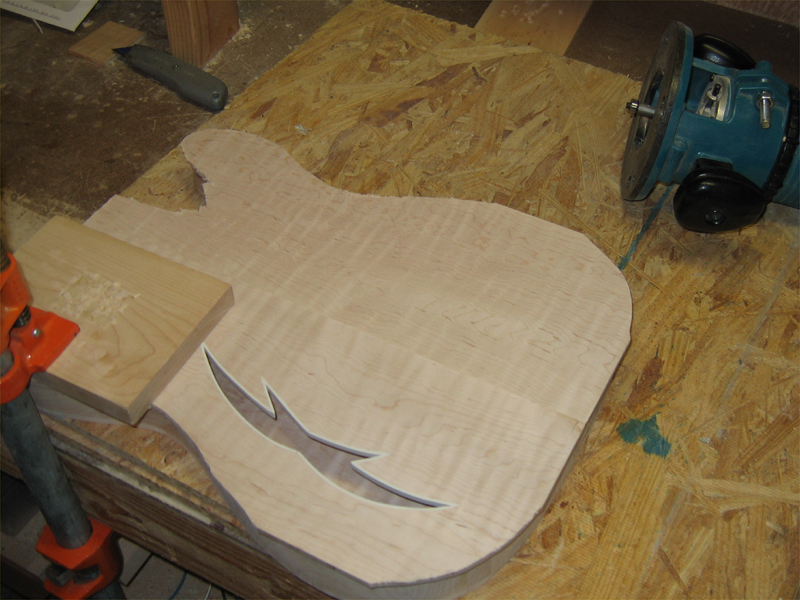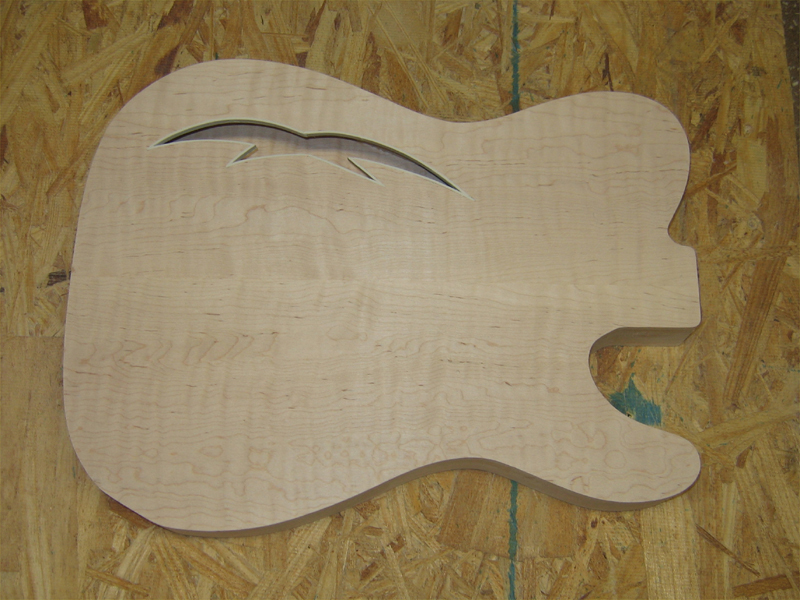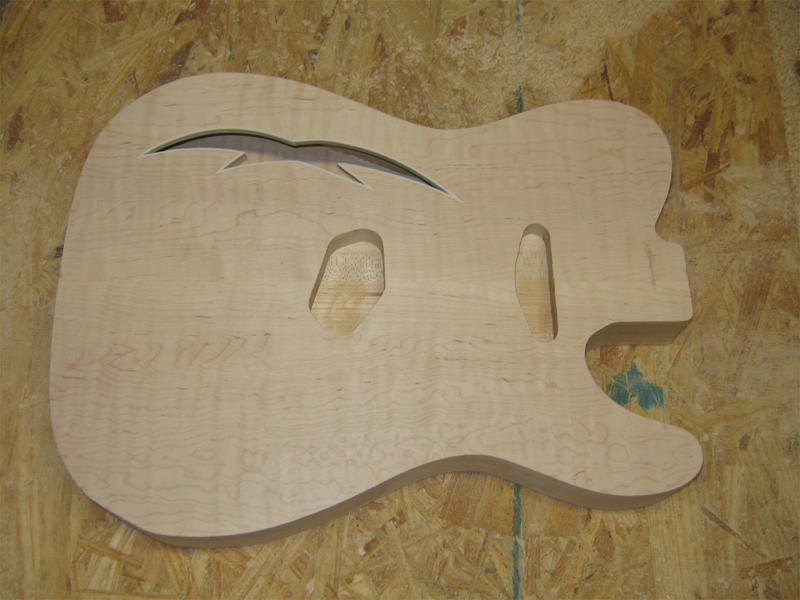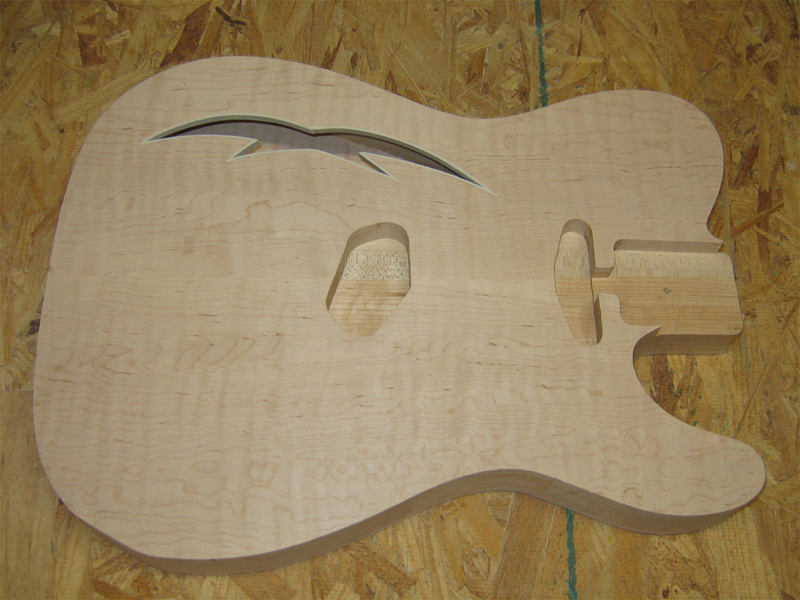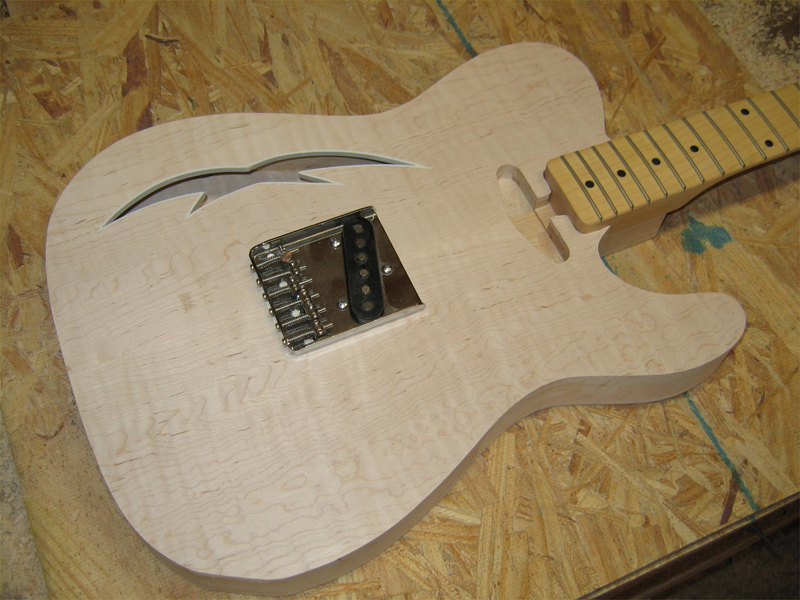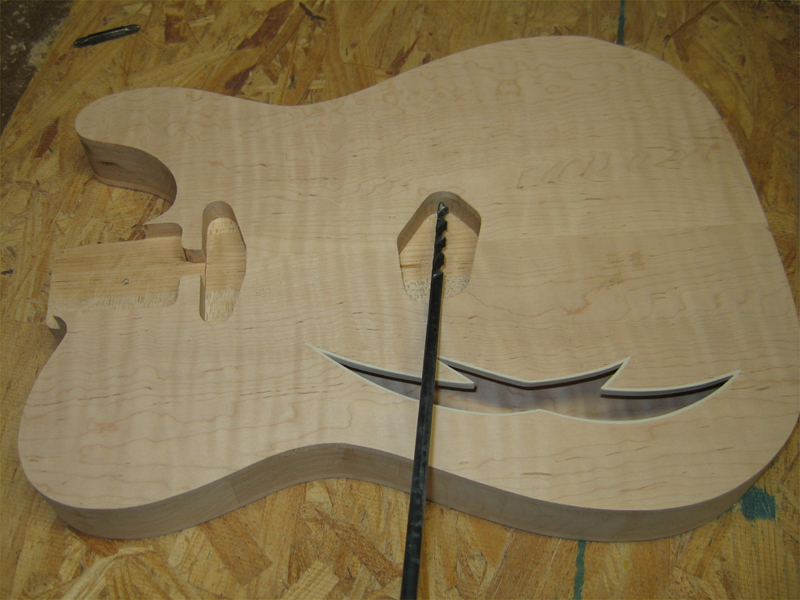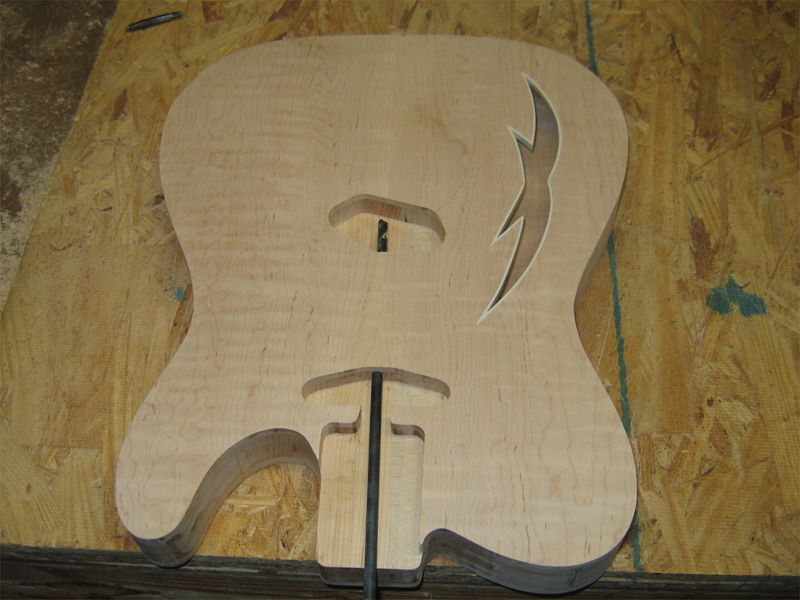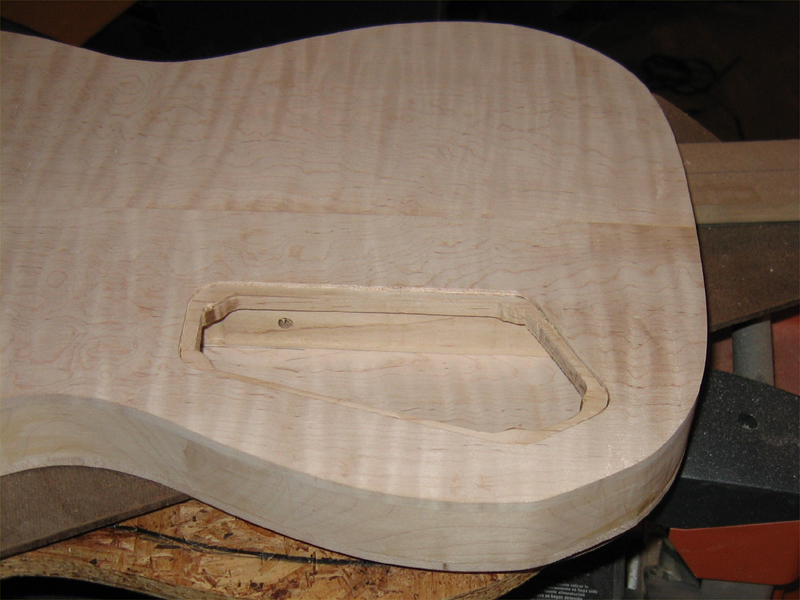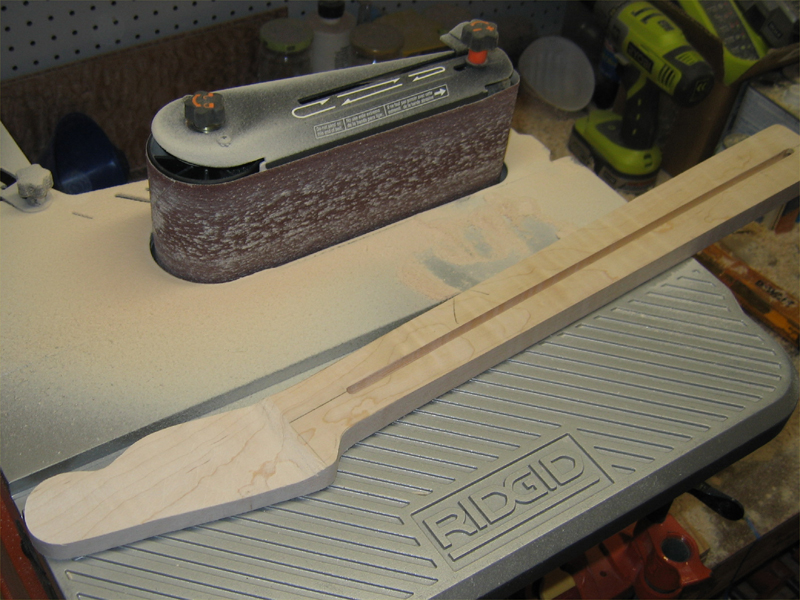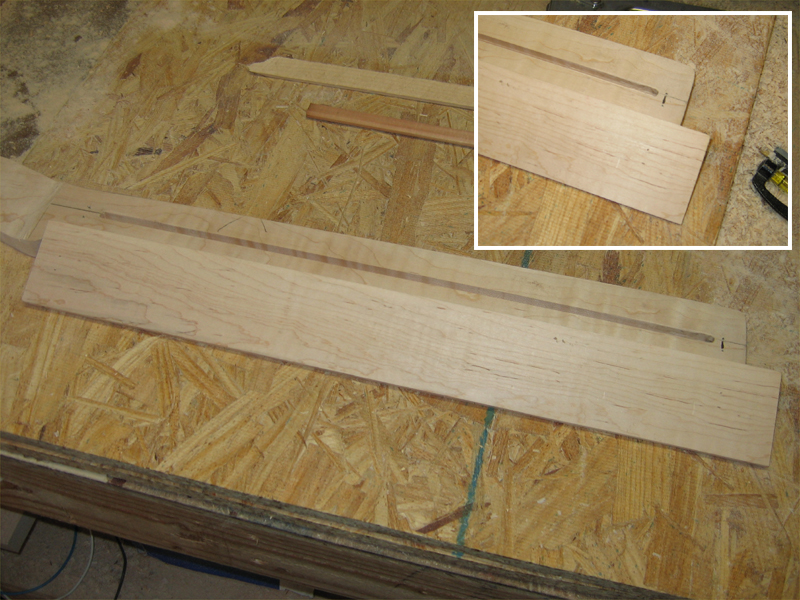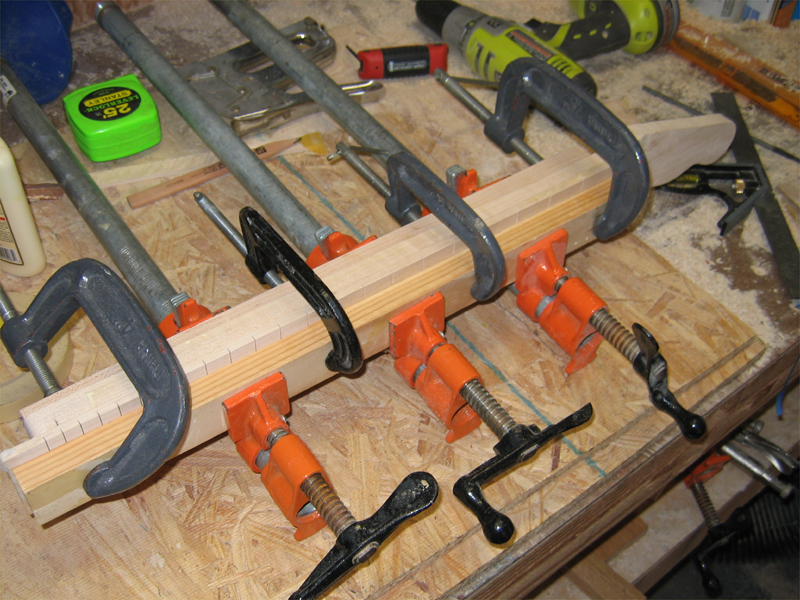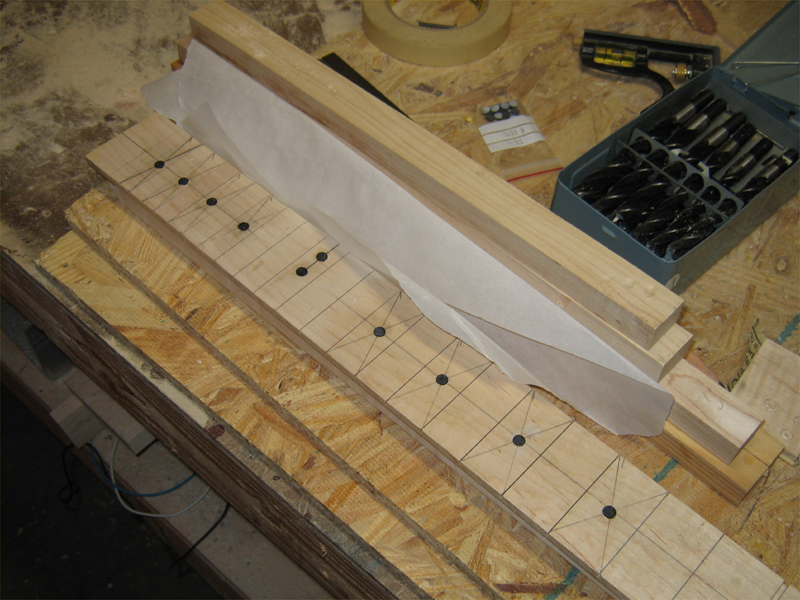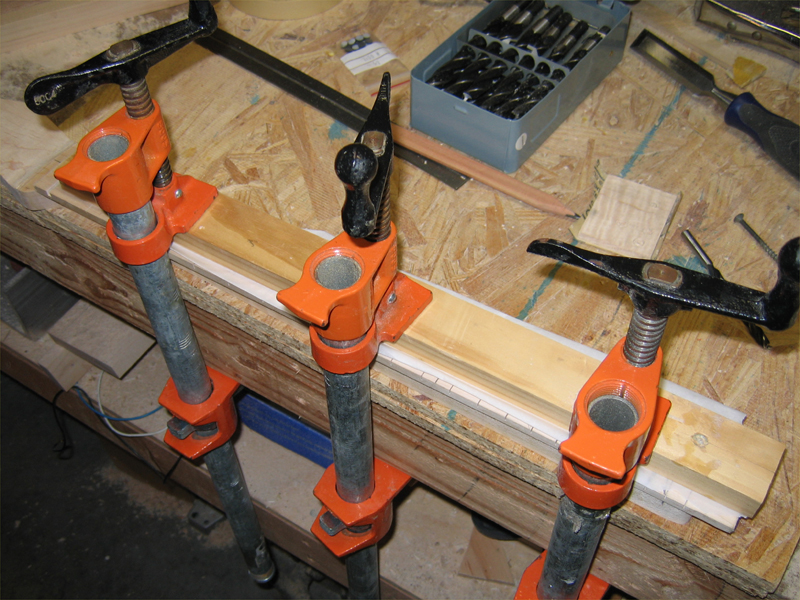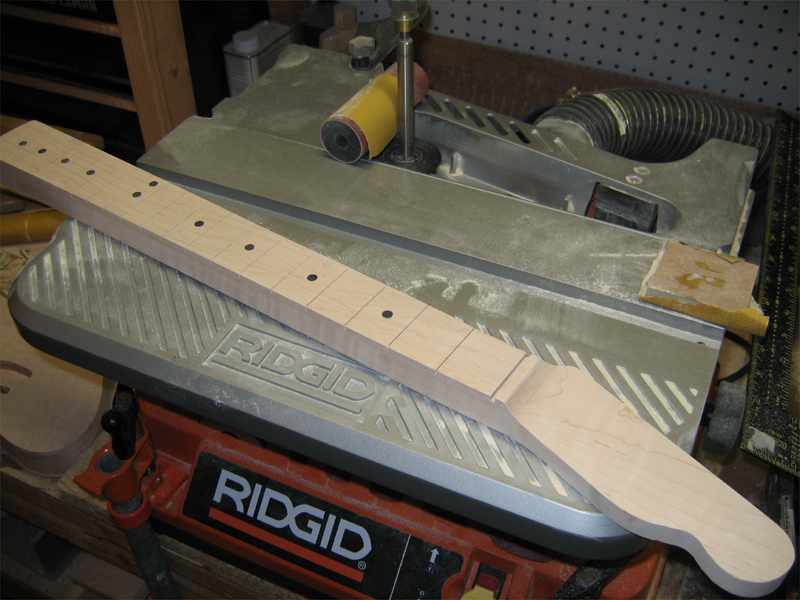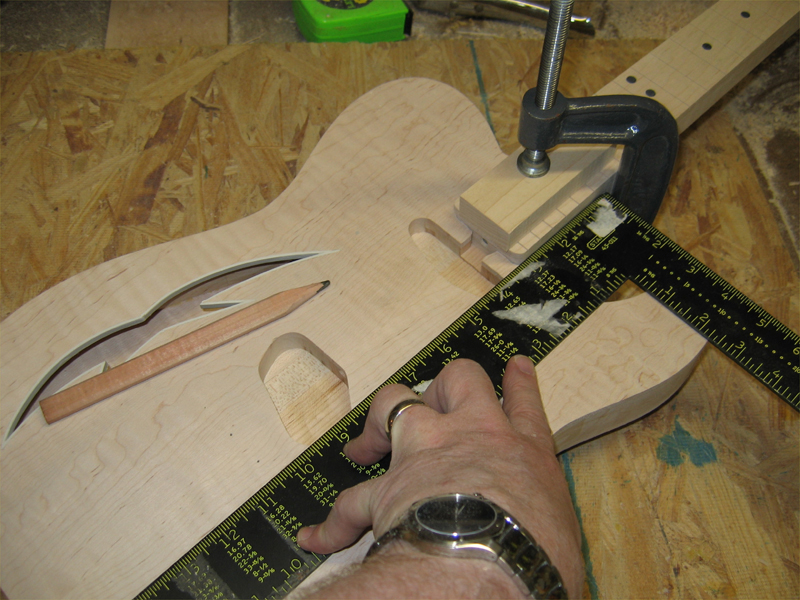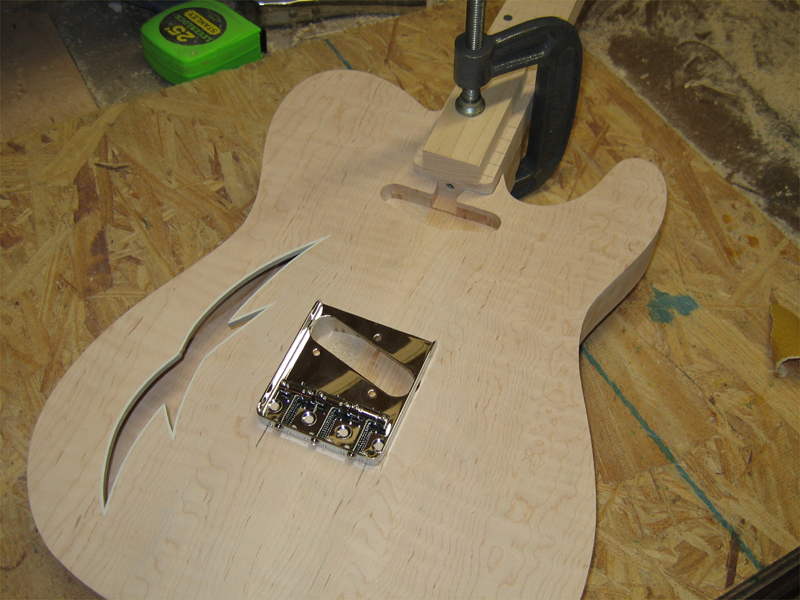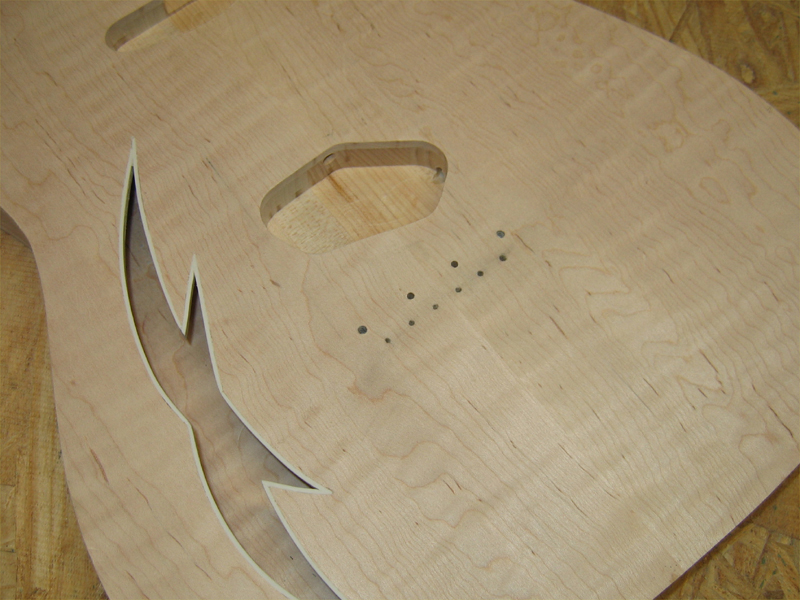I didn't take any pics during the binding process, I had my hands full on this one. I used Weldon cement, StewMac binding tape and a utility knife for trimming. Being my first attempt at inside corners, I'm happy with the results. It was a huge help having the top loose as I could turn it any way I needed to get downward pressure on the binding tape as I applied it.
Ready for gluing up the top.
Out of the clamps and ready for profiling. There's still a bit of planer snipe to deal with but I'll block it out after I finish the profile.
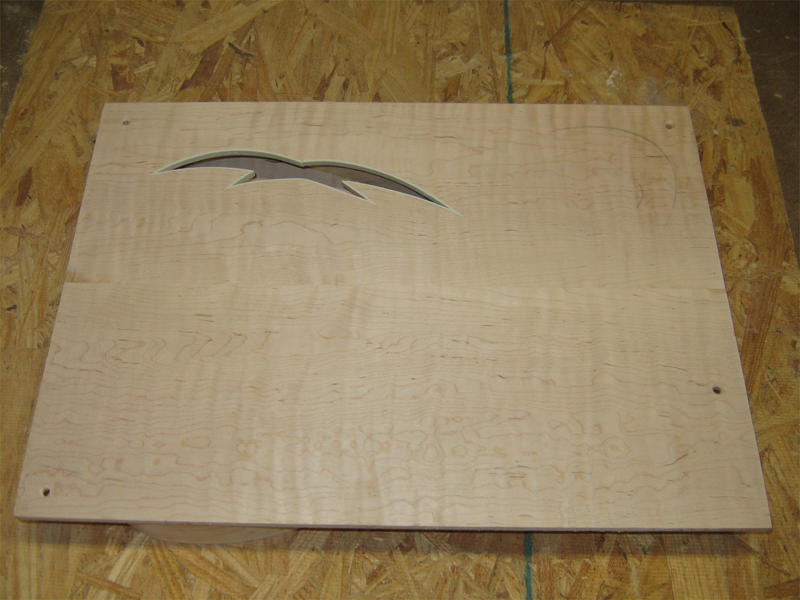






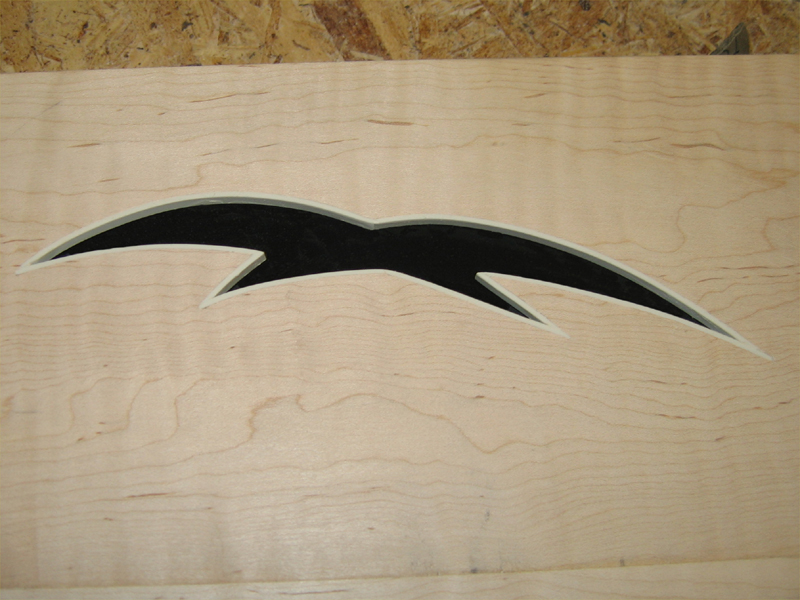
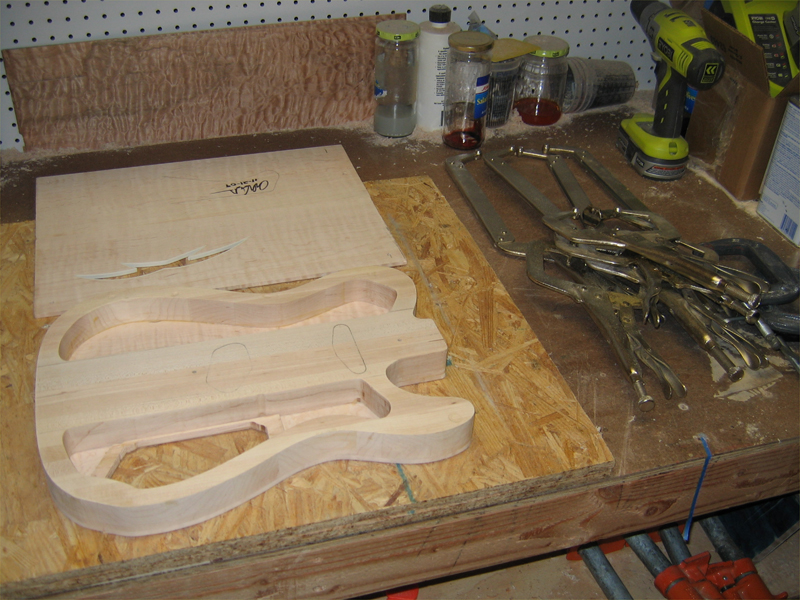
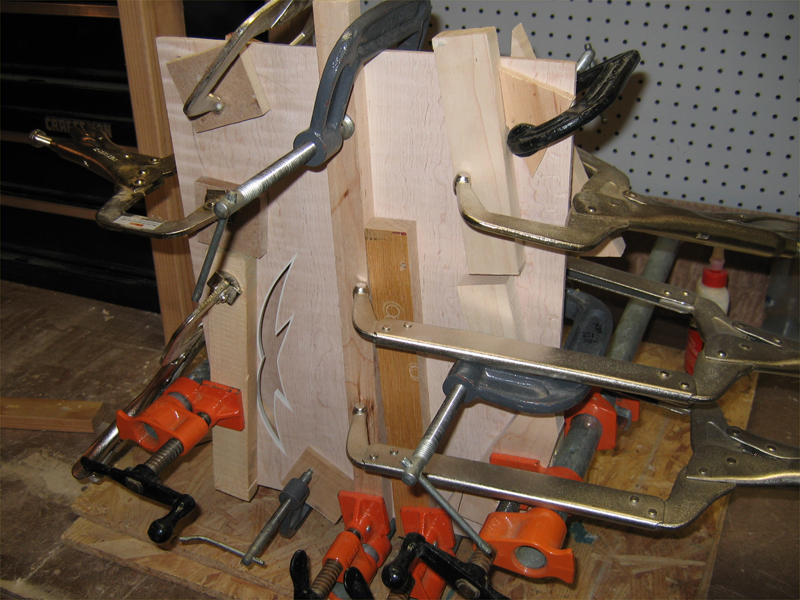

 Reply With Quote
Reply With Quote